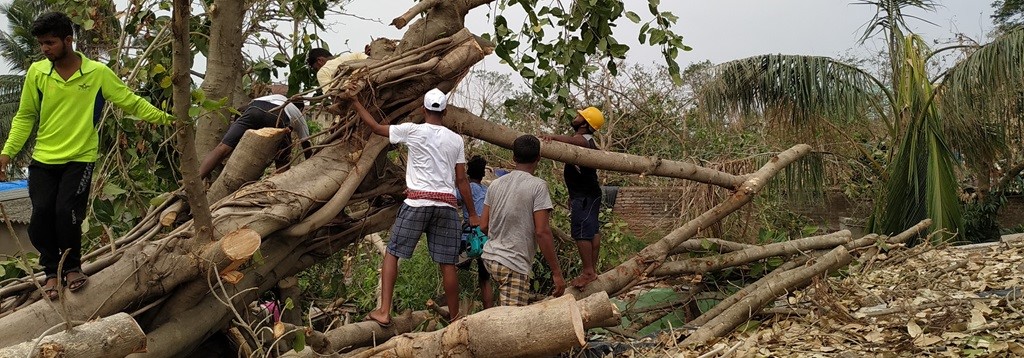

CYSD encourages volunteer participation in relief and rescue operations by forming volunteer bases. The primary focus is on Relief, Restoration/Reconstruction, and Rehabilitation, aiming to reduce disaster risks and vulnerability through coordinated efforts. The CYSD team works diligently to enhance the institutional capacity of communities and local organizations at the village level. Creating awareness and preparedness through community-based planning and capacity-building programs is central to its efforts. This includes monitoring disaster entitlements for vulnerable individuals and families and promoting school safety.
CYSD continues to be a strong regional player in disaster response and preparedness, enhancing its efforts towards innovating climate change adaptation practices and research.
Strategic Interventions
Disaster Preparedness and Disaster Risk Reduction
CYSD makes conscious efforts to strengthen institutional capacities at all levels, from Village Level Disaster Management Committees to the state level. This includes equipping communities in disaster-prone areas with essential life skills like rescue operations, safety protocols, and promoting social cohesion. CYSD actively cultivates a cadre of youth to respond to disasters, reviewing school disaster preparedness plans, and conducting follow-up activities as needed. Youth groups, volunteers from coastal districts, NSS volunteers, and members of the Youth Red Cross Society receive regular training in Disaster Preparedness and Risk Reduction (DPRR).
Additionally, CYSD collaborates closely with Gram Panchayats to develop customized Disaster Management Plans tailored to each Panchayat's unique needs. Promoting school safety in disaster-prone areas and maintaining disaster-resilient infrastructure, such as cyclone shelters, are prioritized initiatives.
The organization also works to forge partnerships between government and non-government agencies involved in emergency preparedness and response. It documents key lessons and best practices, monitors disaster entitlements, and maintains a strong focus on supporting vulnerable groups including the poor, women, children, and people with disabilities.
Village Based Disaster Plan:
Communities, as local resource pools, are crucial for executing immediate rescue, relief, and rehabilitation actions when properly capacitated and involved in designing Village Disaster Management Plans (VDMPs). Recognizing their pivotal role, CYSD initiated the preparation of VDMPs across Odisha by engaging local communities. To date, CYSD has facilitated the development of 530 VDMPs spanning 89 Gram Panchayats in seven districts: Puri, Khordha, Mayurbhanj, Keonjhar, Rayagada, Koraput, and Malkangiri.
Activities included analyzing disaster and vulnerability risks, planning for risk reduction and mitigation, establishing early warning systems, providing post-disaster relief, and conducting participatory monitoring and evaluation through community awareness meetings and Palli Sabha sessions. Additionally, comprehensive environmental assessments were conducted, village resources (human, land, water, forest, animals, etc.) were identified, local challenges were diagnosed, and solutions were prioritized and implemented accordingly.
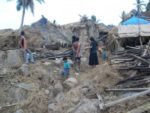
A tornado struck at Rajkanika block in Kendrapara district of Orissa on 31 March 2009 at 4.30 PM that entailed large scale devastation in 11 villages belonging to 5 gram panchayats of the block throwing life out of gear. The tornado took a toll of 17 lives and injured over 300 persons that include mostly women and children.

In 2001 and 2003, Odisha experienced severe floods due to unusually heavy rains, affecting numerous districts. The floods caused extensive damage to property, destruction of crops, loss of livestock, and a deterioration of health conditions due to waterborne diseases. Many villages were cut off from major cities, exacerbating the crisis.
CYSD responded swiftly to this critical situation by mobilizing hundreds of volunteers and resources for relief and restoration activities. The following measures were immediately planned and implemented:

On October 29, 1999, a Super Cyclonic Storm struck Odisha, making landfall near Paradip. With estimated maximum wind speeds of 260-270 kmph in the core area, the cyclone generated a massive storm surge that elevated sea levels by more than 20 feet, resulting in the tragic loss of nearly 10,000 lives. The storm was accompanied by exceptionally heavy rains, leading to devastating floods and isolating the state from the rest of the country.
The extent and severity of the destruction caused by the cyclone were unprecedented:
The cyclone severely disrupted the livelihoods of people living in the affected areas, primarily marginal farmers:
Immediate Response
As soon as the cyclone's fury abated, CYSD began relief and rescue work in both urban and rural areas. They also facilitated a collaborative civil society response, leading to the formation of the Orissa Disaster Mitigation Mission (ODMM), an alliance of NGOs.
Relief to Urban Slums
This comprehensive response aimed to address immediate needs while laying the groundwork for long-term recovery and resilience.
Relief and Rescue in Rural Areas
In rural areas, CYSD operated from 19 nodal points to carry out relief and rescue work in 411 affected villages across six districts.
Food Relief
Community kitchens were established in 335 villages, providing food relief to 162,942 people.
Salvage and Retrieval Work
Efforts included clearing and cleaning roads and water bodies, removing corpses and carcasses, retrieving school structures and individual houses, and repairing small bridges. These activities improved sanitation and made villages accessible.
Health
The cyclone brought fears of an epidemic, such as cholera, due to the non-availability of drinking water, prolonged exposure to wind and rain, and lack of food and shelter. Severe colds, coughs, fevers, and gastroenteric disorders were reported in most villages. CYSD facilitated the formation of health teams that conducted health check-ups at mobile health camps and nodal dispensaries. A total of 25,062 patients were treated, including 5,000 children under five.
Shelter
Temporary shelter materials were distributed to needy families. Food support for shelter renovation was provided under the Food for Work (FFW) program, resulting in the construction of 1,647 thatched houses for the most destitute.
Education
The cyclone threatened school children with permanent disorientation due to hunger, homelessness, and loss of their everyday life. With schools destroyed, books lost, and parents focused on finding relief, children had nowhere to go. CYSD responded quickly by:
Restoration and Rehabilitation
Once immediate response and relief efforts concluded, CYSD shifted focus to long-term restoration and rehabilitation. The population in the cyclone-affected areas faced a bleak future and were threatened with endemic food insecurity. Restoring livelihoods was of paramount importance, with agricultural regeneration given top priority.
Relief and Restoration
Agriculture Regeneration Programme
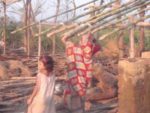
In 2006, Odisha experienced severe flooding that affected 12 districts and resulted in the loss of 22 lives. Kendrapara was the hardest-hit district, with 498,854 people affected across 612 villages. Sustained waterlogging posed a serious threat of an epidemic due to the lack of access to basic health services and safe drinking water. Livestock were stranded with little or no access to water, fodder, and veterinary medicines.
CYSD, in collaboration with the National Service Scheme (NSS) of Utkal University, conducted relief operations in 62 villages across four blocks of Kendrapara district. Four powerboats were deployed, and local volunteers undertook rescue operations and delivered relief materials to the affected and marooned villages.
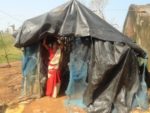
Odisha has consistently faced various disasters. In addition to natural calamities such as floods and cyclones, the state also suffers from persistent droughts affecting its interior regions. In 2008, severe floods impacted 6,481 villages across 137 blocks in 19 districts. As part of the rescue operation, CYSD deployed boats in underserved areas and organized health camps in the coastal districts of Puri, Kendrapara, and Jagatsinghpur, benefiting 3,090 individuals, including 1,055 women and 654 children.
The disaster response and mitigation unit undertook the following activities:
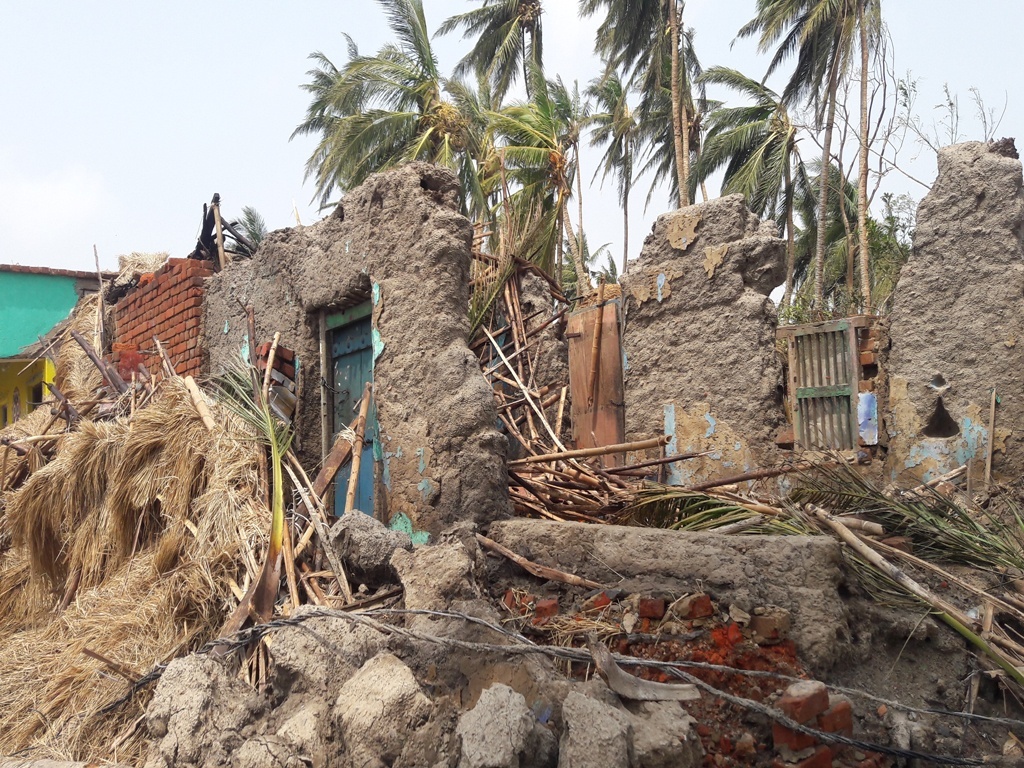
In 2019, Cyclone FANI wreaked havoc across coastal Odisha, severely impacting approximately 16 million people in about 20,000 villages spread across 159 blocks and 52 Urban Local Bodies in 14 districts. The districts of Puri and Khurda, including the capital city Bhubaneswar, suffered the greatest devastation. The cyclone caused damage to about 5 lakh houses, submerged 1.88 lakh hectares of crop area, and affected 88 lakh livestock. Tragically, there were 64 human casualties and 53 lakh livestock casualties reported. Additionally, over 7,000 educational institutions, 1,031 primary health centers, and 1.56 lakh electricity poles were damaged. Cyclone FANI also destroyed coastal forests, uprooting approximately 10 million ecologically sensitive trees and damaging numerous others.
The aftermath saw a profound struggle across the state to restore normalcy, particularly in terms of rebuilding lives and livelihoods. People from various sectors such as paddy, pulses, vegetables, nutrition gardens, fruit-bearing trees, and inland fisheries lost their sources of income. Marine fishermen suffered losses of boats and nets, while street vendors, numbering around 30,000, lost their means of livelihood. Vulnerable groups, including children, differently-abled individuals, elderly people, single women, and widows, were particularly affected due to lack of safe spaces and the overall compromised health and hygiene conditions.
CYSD responded swiftly by conducting rapid assessments in Puri and Khurda districts, along with urban slums in Bhubaneswar Municipal Corporation, to assess damages and plan future actions. A pilot project using Drone and Artificial Intelligence in collaboration with India Flying Labs assessed damage in Arakhakuda village, Bramhagiri block, Puri district. CYSD reached out to 57,773 people across 26 Gram Panchayats in eight blocks and 46 slum habitations under two Municipal Corporations.
Under CYSD's leadership, Civil Society Organizations (CSOs), relief agencies, intellectuals, and media houses formed the "Civil Society Responds to FANI" forum to coordinate humanitarian efforts immediately after the cyclone. More than a hundred volunteers from various organizations were mobilized to assist in relief and restoration activities in the worst affected districts of Puri, Khurda, and Cuttack. Information, Education, and Communication (IEC) materials in Odia were developed and distributed to help affected people access government relief packages and promote massive plantation drives.
Volunteers, including 103 male and 22 female volunteers from ANTARANG of JAGRUTI, National Youth Project (NYP), National Service Scheme (NSS), Indore School of Social Work (ISSW), and interns from various educational institutions, played pivotal roles in coordinating relief efforts on the ground. Relief distributions included Survival Kits, Dignity Kits, Education Kits, and tarpaulin covers. CYSD also established Cyclone FANI Response Hubs in strategic locations to facilitate service delivery, particularly in providing clean drinking water, health and hygiene camps, and reconstruction of WASH facilities in schools.
The "Green Odisha Drive" initiative, in collaboration with the Civil Society Response to FANI forum, focused on restoring greenery post-cyclone. It involved consultations with civil society leaders and Panchayat representatives to develop a roadmap for ecosystem restoration. Additionally, CYSD constructed traditional intermediate shelters for vulnerable families and established Child-Friendly Spaces (CFS) to provide safe learning environments for children in the worst affected areas.
To support local artisans affected by the cyclone, CYSD organized skills improvement training for coconut coir and Pattachitra artisans, enabling them to produce marketable products. School renovations focused on improving sanitation and hygiene conditions, benefiting thousands of students.
Overall, CYSD's comprehensive response to Cyclone FANI addressed immediate humanitarian needs, facilitated community resilience building, and laid the groundwork for long-term recovery and rehabilitation efforts in Odisha.

In September 2020, unprecedented floods in Odisha affected 1.4 million people across 3,256 villages in 896 Gram Panchayats within 112 Blocks. Bari Block in Jajpur district suffered the most, with over 10,000 houses damaged and 75,737 hectares of farmland submerged across 13 of the 29 affected Gram Panchayats. The flood also led to contamination of water resources, posing risks of waterborne diseases and creating breeding grounds for mosquitoes.
CYSD responded by setting up Flood Relief Operation Nodes in Bari Block's Bari, Ratnagiri, and Indupur villages, managed by National Youth Project Volunteers. Relief efforts focused on distributing dry rations, conducting sanitation and disinfection drives, and organizing health check-up camps. Sanitation efforts engaged 900 local youth volunteers, cleaning village roads and disinfecting water sources using bleaching powder. Health camps, in collaboration with Humanitarian Aid International and Amrut Global Network, served around 6,050 people, providing treatment and distributing essentials like masks and sanitary napkins.
To restore livelihoods, CYSD supported 1,468 vulnerable farmers from seven Gram Panchayats with high-quality vegetable seeds, plant medicines, and startup kits. Farmers were trained in advanced cultivation methods, linked with markets, and some were integrated into government schemes like 'Mo Bagicha', enabling economic recovery within 2-3 months.

In the November 2022 flood, triggered by rising waters in the Mahanadi and Subarnarekha Rivers' tributaries, over a million people were severely affected, especially in Balasore and Puri districts. Puri district alone saw approximately 275,000 people from 380 villages across 65 gram panchayats stranded and in urgent need, particularly in Kanasa, Gop, and Nimapara Blocks. Balasore district also suffered, with 136 villages submerged, predominantly in the Baliapal block. The flood caused damage to 9,000 hectares of crops and affected over 100,000 livestock.
In response, CYSD partnered with civil society organizations like SAVE, AMURT, Sadhu Charan Charitable Trust, and ARM, as well as engaged youth platforms such as NYP and NSS. Together, they launched coordinated relief efforts in 9 gram panchayats in Puri District and 6 in Balasore District, focusing relief and recovery operations through gram panchayats.
CYSD concentrated efforts on immediate WASH campaigns, mid-term livelihood interventions, and long-term recovery support. The team provided WASH and healthcare support to 3,000 individuals, distributed dry rations to 2,000 households, and equipped 2,400 women and adolescents with hygiene kits. In supporting livelihoods, CYSD assisted 1,112 farmers in agri-allied sectors, resulting in the production of 1.3 million kilograms of vegetables valued at ₹18 million. Additionally, CYSD's social housing hub retrofitted 90 vulnerable households into climate-resilient structures.
Forest Protection/Regeneration: Tribal livelihoods rely on forests, agriculture, and wage labor. Improving forest, land, and water quality enhances community livelihoods. Efforts include sensitizing community members about the forests' importance through training programs, eco-club activities, World Environment Day observances, and Bana Mahotsav. Forest protection involves collaboration among community members, Vana Sanrakshyana Samiti (Forest Protection Committee), and the forest department.
Community ownership of forest protection and regeneration has increased. Entire villages, not just producer group members, participate in seed sowing and tree planting, including fruit-bearing trees like mango, jackfruit, tamarind, and amla. These plants provide income, food, and medicines while promoting eco-friendly communities.
Agro-Forestry: Agro-forestry is promoted on cultivable wastelands. Inter-cropping provides immediate monetary returns and supplements nutrition. Household members also earn wages through MGNREGS while preparing fields and digging pits. Mango saplings, bio-fertilizers, pesticides, pitchers, and tree guards are sourced through programs like Special Central Assistance to Tribal Sub Plan. Hill grass plantation is initiated in forest and common lands with producer groups involved. Inter-cropping (black gram, green gram, horse gram, niger, maize, ragi, and vegetables) and border cropping are also encouraged.
To promote environmentally friendly livelihoods among tribal farmers, village-level training programs have been organized for members of Farmers’ Clubs. These programs focus on creating and maintaining community water bodies, managing solid waste, practicing organic farming, and utilizing plantation techniques (such as social forestry and orchards). These efforts aim to mitigate the adverse impacts of climate change. Participants are encouraged to adopt climate-friendly livelihoods and promote water conservation systems like rainwater harvesting, check dams, organic farming, land bunding, plantation initiatives, and corner pits in agricultural lands. These practices are crucial for sustainable agriculture and optimal use of water resources.
The organization is actively promoting technical innovation and community-based adaptation measures at the grassroots level. It aims to standardize and scale up effective adaptation practices, integrating them into long-term planning at both state and national levels. Additionally, the organization is documenting traditional climate-resilient practices to advocate for their adoption as strategies for state development and poverty reduction. Furthermore, efforts are underway to enhance understanding of climate change mitigation actions, global protocols, and instruments such as REDD+ and the voluntary carbon market.
CYSD has launched initiatives in its operational districts, particularly those with significant tribal populations, to promote climate-resilient agricultural models. These initiatives include adopting the System of Rice Intensification (SRI), implementing water conservation techniques, practicing climate-resilient agriculture, promoting forest regeneration, using renewable energy, initiating carbon sequestration projects, and encouraging clean and green energy initiatives among local communities.
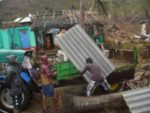
On October 12, 2013, a severe cyclonic storm named Phailin struck Odisha with wind speeds exceeding 220 km per hour, causing massive devastation and severe flooding across many districts. The cyclone was followed by incessant rain, resulting in floods in two phases. Ganjam and Puri were the hardest-hit districts. Official reports state that 59 people lost their lives due to the cyclone and subsequent floods, which affected half of the state's population of 4.19 crore, spanning 18 districts. The disaster destroyed standing crops over nearly 11 lakh hectares, damaged over 8 lakh houses in nearly 22,000 villages, and resulted in the loss of 2,000 livestock. Power installations worth about ₹12,000 crores were damaged, and nearly four lakh electric poles were uprooted in Ganjam district alone.
In response to this disaster, CYSD established the Odisha Phailin Response Forum (OPRF), an alliance of civil society organizations dedicated to Phailin relief efforts. In collaboration with local NGO partners, CYSD undertook several initiatives to address the immediate needs of the affected population.
Immediate Relief Support
Restoration Support
Rehabilitation
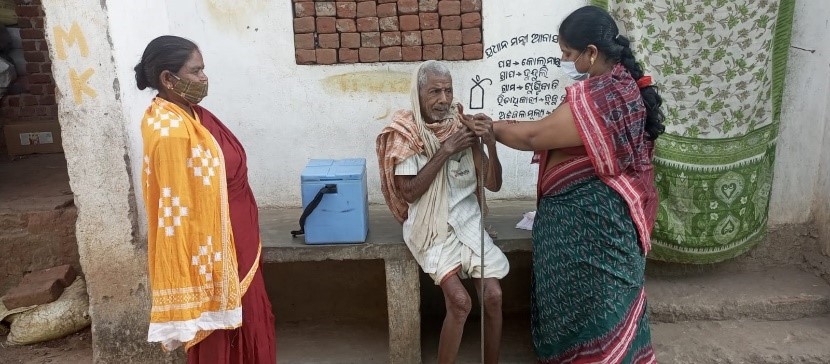
Hardly had the first spike of COVID-19 pandemic been over, the second wave resurfaced with a much deadlier impact during the beginning of April 2021, not leaving anyone unimpacted. The lockdown in the entire country by the Government to control its further outbreak created an economic disorder in the lives of millions employed in the informal sector – not just the daily wagers, but also the big economy work force. This was a most terrible time as there was no availability of testing facilities, hospital beds, medicines and oxygen. Even the staff members, animators, community resource persons, citizenry leaders and their family members all got infected, fell sick, with and without hospital services with several hundred meeting with untimely unfortunate deaths.
However, CYSD in association with the other CS fraternity bravely continued the awareness generation program, while making sure to distribute food relief, protective masks, hand sanitizers, thermometers and oximeters to the frontline health workers for enabling them to continue the surveillance work effectively. Oxygen concentration equipment sets were provided to healthcare set-ups to help them come to the rescue of patients struggling for life and death due to shortage of oxygen supply.
During the second wave of COVID, CYSD made efforts towards:
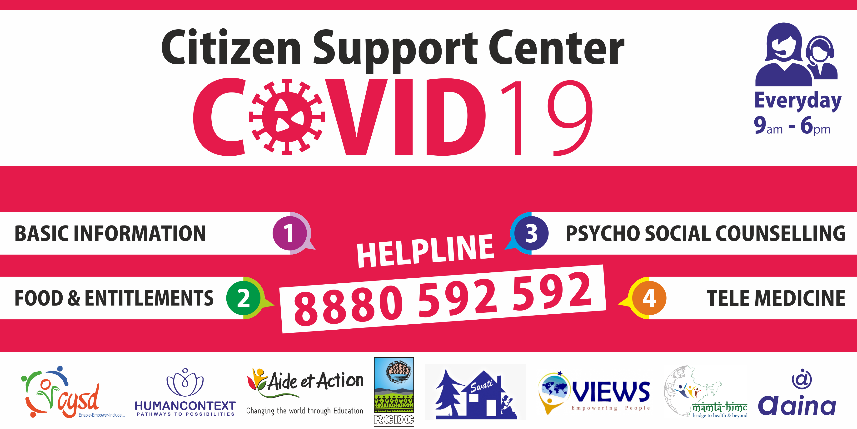
Citizen Support Centre – a virtual toll-free platform initiated by CYSD in association with the civil societies played a pivotal role in providing healthcare consultations during the COVID-19 pandemic. Like so many people in the country, findi...

Social Housing: Social housing and construction of temporary shelters (traditional intermediate shelters) for the most affected vulnerable families was viewed as a crucial need of the community. CYSD embarked upon providing intermediate shelters...
Children were the worst affected during and the post cyclone’ FANI’ days. While parents and other adults remained busy with salvaging items from the ravage, repairing houses, arranging food and water - children were neglected and left on&...